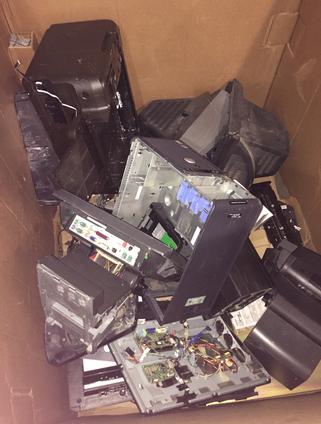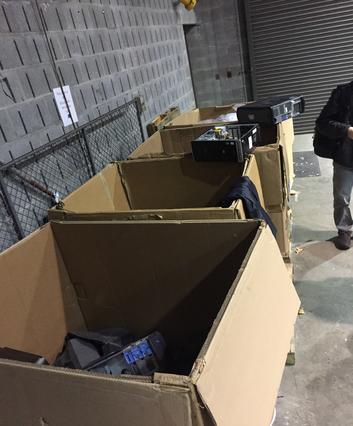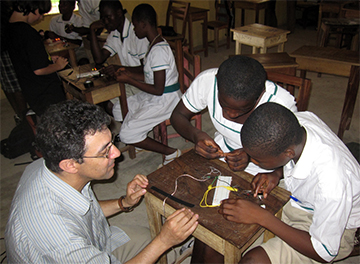E-Waste Sites


In many communities, there are "electronic waste dumps," where people drop off broken or old electronic technology to be recycled. Although the original owner sees no value in the out-dated or damaged technology, there may still be valuable components within it that could be revived for an e-waste project. As they say, "One person's trash is another person's treasure"!
Electronic recycling sites like this are a great way for a community to share and not be wasteful of resources.
Kumasi, Ghana

In 2014 we began looking at how EW2MS might be used to fabricate the open source condom vending machine. One possibility we explored was discarded printers. We found that most discarded printers were burned to get rid of the plastic and recover metals. So we interviewed a guy who does printer repair--of course he had a great supply of broken printers for sale! It turned out that using the odd-shaped printer cover as the exterior shell of the vending machine was too complicated compared to sheet metal folding. But it was a great experiment.

In 2011 we took some basic sets of electronic tools to conduct some "maker" exercises with 8th grade students in Kumasi, Ghana. Although there is no equivalent to Radio Shack, many important electronic components -- AC to DC power converters for example-- are available at low cost in the form of electronic "cast-offs." Calling it e-waste is not quite accurate, since the Ghanaians already recycle many materials, but this kind of "upcycling"-- re-purposing cast-off parts-- is much better for the environment and health than burning plastic wires to get the copper, and other toxic forms of recycling that are common there.

In 2014 we worked with undergrads in the KNUST Creativity Group to develop a solar reflector. Sun-tracking was to be done by a small photo-voltaic powered motor. But how to gear it down enough to deal with the weight and torque? The solution was to use bike parts connected to a discarded power screwdriver. The screwdriver head was mounted with a bike derailer gear, and the bike chain went from that to the wheel gear that would normally connect to pedals. The wheel gear wound a string connected to the rim of the reflector. An Arduino with a power transistor was used to time pulses so that the turning rate was synced to the sun angle changes. For more about the Creativity Group and its e-waste innovation see http://www.creativitygroup.org